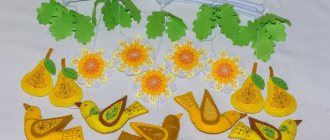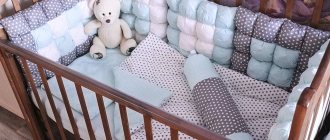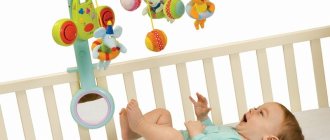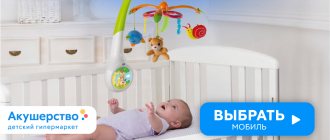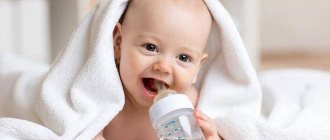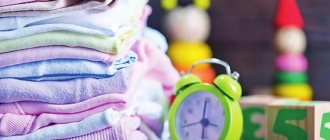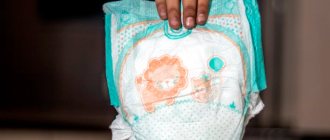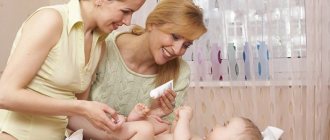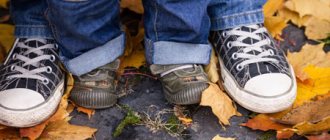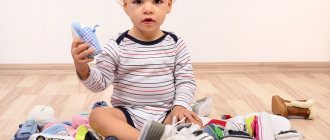The very first toy of any child is a rattle. It can be made from a wide variety of materials, but is usually plastic or wood. Bright toys allow the child to quickly learn about the world around him through sounds and tactile sensations.
Many parents wonder how to choose a baby rattle. Let's consider the main factors that influence the purchase.
Benefits of a rattle
A good rattle promotes baby development. By extracting sounds from a toy, the child learns to find a connection between the movement of an object and its sound. Saturated colors will attract the newborn's attention, and he will learn to fix his gaze on one point. As a result, the baby trains attention and memory.
A toy held by little fingers develops fine motor skills. The baby learns to grab and hold an object for some time.
Before purchasing a rattle, you should check what sounds the item makes. A rustling noise that is too loud can frighten a child, so for younger children it is better to choose quieter options.
Rattle made by mom
Of course, the best thing parents give their baby is love and care. But as a gift reminiscent of childhood and the warmth of mother’s hands, a rattle made by yourself would be an excellent option.
Giving free rein to your imagination, use completely different objects and materials for making. Knit from wool, sew from pleasant fabric; fill with beads, various cereals and seeds. An interesting option is to paint a small doll blank and use it as a rattle.
What age is the toy intended for?
Some parents believe that a rattle can be used from birth. However, experts note that this is not the case. A child under three months old does not yet know how to grab an object and hold it in his hand. That is why for newborns it is better to buy hanging toys that can be observed without much difficulty.
As the baby grows up, he tries to touch the rattle with his hand or foot, as a result the object makes sounds and holds attention even longer.
For older children, you can choose hand rattles. The baby is already smart enough to hold an object tightly and shake it to make a sound.
Choosing a rattle
Rattle pendants are best suited for a newborn. They are attached to the crib at a distance of 30-40 cm from the baby’s eyes. They come in a wide variety of shapes and colors.
Starting from three months, you can buy rattles for your baby’s arms. There are handles in the form of a ring; such rattles can be put on a child’s wrists. The baby will wave his arms and the rattle will rattle, thereby attracting the baby's attention. And there are rattles with comfortable handles designed to be clamped in your fist. Such handles can be smooth or rough. The latter contribute to the development of sensitivity in the child’s hands.
Rattles need to be changed periodically. When buying a musical toy or rattle, be sure to listen to the sound of the toy yourself. It should be pleasant, in no case loud or too harsh, this can scare the baby.
It is clear that the toy must first of all be safe. Rattles are usually made of plastic or rubber. Therefore, such a fact as smell is important. If a toy has an unpleasant odor, it is better not to buy it. It should be remembered that a high-quality rattle is sold in a package, which must include instructions indicating the age of the children for which it is intended.
The most important thing for any parent is to ensure the safety of their child. Therefore, when buying another toy, you need to consider many factors:
- the material from which the rattle is made;
- how durable is the body of the rattle;
- Will it be possible to wash (process) the rattle?
And only if the answers to these questions are positive, you can safely buy the toy you have chosen. As a rule, a rattle is especially important in the first year of a baby’s life.
When buying a toy for a small child, you need to avoid the presence of small parts and soft filler.
Today, you can very often find a rattle in combination with a teether - a soft rubber element that is simply irreplaceable during the teething period. This toy serves as a kind of massager for the baby’s gums.
As you can see, a rattle is a multifunctional toy, and therefore very necessary. That is why you need to take her choice seriously.
Types of toys
Children's rattle toys come in hanging and hand-held types. Some options attach to a crib or car seat. The baby looks up and watches funny animals and beautiful figures. While moving, the suspension makes a monotonous sound, which calms the child and helps him fall asleep quickly.
Another type of rattle is a bracelet. You can put a bright object on your child’s hand that will occupy the baby’s attention for a long time. When choosing this option, you need to make sure that the material of the toy is hypoallergenic and does not cause unpleasant sensations on the baby’s delicate skin.
From the age of three months, children can play with individual objects in the form of balls, rings and animals. The baby will hold the toy in his hand and independently explore its capabilities.
The most unusual option is baby rugs with rattles. Children often get tired of being in the crib all the time, so a soft and warm rug on the floor will be an excellent alternative to their usual space.
At about six months of age, babies begin to cut their teeth. To alleviate the condition of the gums, you can offer the baby a special teether, which will entertain the child for a long time.
When to give the first rattle?
All young parents ask the question: at what age do newborns need such toys? It is not for nothing that there is an old tradition of giving a rattle for the birth of a child. In the first months of life, the baby will not be able to play with her independently, so it is worth buying rattles that hang on the crib or stroller. They should be hung at a distance of 40-60 cm from the child’s face so that they can focus their gaze on them. At this age, you can already play simple games with the help of a rattle - move it in front of the baby’s face, encouraging him to follow it with his eyes and turn his head.
Useful tips
You shouldn’t skimp on a toy, as cheap options can be dangerous to your baby’s health. If possible, you should familiarize yourself with the quality certificate or buy rattles only in large stores.
If an item has a strong odor or leaves colored marks on your hands, this means that the toy is made of harmful materials. Toxic plastic can cause serious harm to a child's health.
Before purchasing, the parent should check whether the toy has any sharp corners that could injure the baby.
Rattle device
The rattle device is very simple. If desired, you can make such a toy yourself. You need to take any hollow object and place small parts in it that ring when shaken.
Previously, rattles were made from clay: two hemispheres were sculpted, peas, pebbles or cereal were placed inside and connected.
Currently, there is a large selection of rattles. They are made from different materials and come in a variety of shapes and colors. Some rattles have a hole to make the sound louder.
Features of Soviet rattles
Both types of rattles were made both voiced and unvoiced: the first ones were filled with something harmless, like peas or lentils, which made characteristic rustling and rattling sounds. Until about the 60s. It was strictly forbidden to fill the rattles with anything other than the voiced material, but it seems that this prohibition was lifted at a later time.
The main requirements that applied to the very first children's toys were safety. The rattle had to be bright, attractive and completely harmless - it required a complete absence of sharp corners and ends, strong fastening of individual parts, avoiding breakage and the possibility of swallowing the contents of the rattle or its components.
You can read about smart Soviet coloring books for children HERE , and on our Zen channel you can read about how they made baby bottle warmers - such a wonderfully convenient thing was also present in Soviet life.
Why do we need rattles for newborns?
It would be a mistake to think that a rattle is needed only to soothe a crying baby. A high-quality rattle should have a developing effect on:
- Visual perception: through bright colors and varied geometry of shapes.
- Tactile sensations: through various textures: wood, rubber, fabric, plastic.
- Auditory: Via shaking sounds or built-in sound effects.
- Coherence of movements: through attempts to reach the toy.
The rattle affects the physical, mental and emotional areas of development.
How does a child develop in the first months of life?
How many months does a baby start teething? The answer is here
What time does a child start walking? Answer - https://klubmama.ru/razvitie-rebenka-po-meyacam/razvitie-rebenka-s-6-12-mesyacev/rebenok-nachinaet-xodit.html
Beanbag
You need to buy the first toys for babies carefully and carefully. First of all, you should navigate the huge range of all kinds of gaming accessories for newborn babies. The basic rule is that there should not be too many toys! For example, a traditional rattle is ideal for a newborn. A rattle is a toy for babies from the first days of their life.
Even in Ancient Greece and Rome, rattles were given to newborns. But they weren't doing them for fun. It was believed that with their noise they drive away evil spirits from children and protect them. During the excavations, wooden rattles with bells and metal plates were found, which produced a characteristic sound when moved. But the earliest rattles known to us were found in ancient Egypt. The finds date back to the third millennium BC. Here rattles also served as amulets. The Egyptians believed that if you leave a child with a toy, nothing will happen to him. And they were made not only from wood, but also from clay, straw, wicker, birch bark and animal bones.
In Ancient Rus', rattles were called “tarakhtushki” or “trinkets”. Dried peas, various seeds, pebbles, seeds were placed inside - everything that could reproduce different sounds. And the word “rattle” itself comes from the expression “to rattle by the ear.” Rattles are figurative figures or geometric shapes on a handle, made of wood, plastic or other materials. When shaken, a low noise is heard.
Children's rattle toys come in hanging and hand-held types. Some options attach to a crib or car seat. The baby looks up and watches funny animals and beautiful figures. While moving, the suspension makes a monotonous sound, which calms the child and helps him fall asleep quickly.
Materials for rattles can be used completely different:
- Plastic rattles can come in different shapes and colors. When purchasing such an item, you need to make sure that the plastic does not have a strong odor.
- Textile. Soft toys with a rustling function are most often sewn in the shape of animals. These rattles are safe for the baby and very pleasant to the touch.
- The wooden rattle option is the most environmentally friendly. Wooden toys look beautiful and have a smooth surface.
- Silicone. Silicone rattles can be used as teethers. These toys are safe for the baby and do not cause an allergic reaction.
From the age of three months, children can play with individual objects in the form of balls, rings and animals. The baby will hold the toy in his hand and independently explore its capabilities. At about six months of age, babies begin to cut their teeth. To alleviate the condition of the gums, you can offer the baby a special teether, which will entertain the child for a long time. Rattles are used for the all-round development of the baby. With their help, the child learns to focus his gaze, follow an object and distinguish where the noise is coming from. Rattles develop auditory and visual skills and introduce babies to different shapes and colors. A little later, the child will try to reach out to the toy and take it in his hand, thereby training coordination of movements and tactile sensations, as well as developing fine motor skills of the hands. That is why any rattle has a comfortable handle, ideal for small hands.
You shouldn’t skimp on a toy, as cheap options can be dangerous to your baby’s health. If possible, you should familiarize yourself with the quality certificate or buy rattles only in large stores. If an item has a strong odor or leaves colored marks on your hands, this means that the toy is made of harmful materials. Toxic plastic can cause serious harm to a child's health.
Before purchasing, the parent should check whether the toy has any sharp corners that could injure the baby. Modern manufacturers offer a wide range of rattles from a wide variety of raw materials, which have their pros and cons. Some of these companies include: Pigeon, Tiny Love, Canpol Babies, Chicco, Bright Starts and Umka.
Rubber rattles
This type of toys was a little less common than celluloid ones, and, as a rule, the very first rubber rattles were made in the form of a stylized sphere/hemisphere on a handle ending in a ring. Typically, such rattles were made from unpainted rubber, either white, beige, or light gray. The advantage of the rubber rattle was that it could not only be washed in hot water, but also sterilized with boiling water.
Such toys were made from special harmless varieties of rubber using the molding method: the blanks are pressed out of the rubber, water or ammonium carbonate (a kind of “blower”) is placed between the upper and lower parts, and then the edges of both halves of the toy are glued together. This “semi-finished product” is placed in a mold, the mold is placed in an autoclave, where under the influence of heat either water turns into steam or ammonium releases carbon dioxide and the toy is vulcanized and molded.
How to choose a safe toy?
Any thing that a newborn touches must be safe. And the rattle – first of all. When choosing standard or hanging rattles, be sure to pay attention to several factors:
- Smell. Smell the toy: a high-quality product does not smell at all or has a slight natural smell. A sharp, unpleasant “aroma” indicates that the composition contains toxic substances.
- Color. Too bright colors, sparkles, and inscriptions signal the presence of toxic elements. It is better to opt for rattles in more natural shades.
- Weight and structure. A toy for newborns should not weigh more than 100 grams. Also make sure there are no burrs or sharp corners.
- Shell integrity. If you buy a teether, make sure that the liquid filler does not leak anywhere.
- Seller's reliability. You can choose rattles only in specialized stores that have product safety certificates. Never buy things for newborns in markets or secondhand.
Rattles are the most important educational toy for a baby. It stimulates vision, hearing, fine motor skills and coordination. But in order for the baby to get as much pleasure and benefit from the game as possible, the mother must take an active part in it.
When to give a newborn a rattle?
From the very first days of life, you can begin to accustom your child to rattles by hanging them on a stroller or crib. The baby will fix his gaze on hanging bright toys and listen to the sounds they make when rocking.
You can show the toy to babies by moving it in front of their eyes, slowing down and speeding up. Mothers give the slightly older baby the opportunity to rattle it by putting it on his or her hand.
It is necessary to remember: the number of toys should not exceed more than 5. In a pile of rattles, a child may simply lose interest in all of them. It is better to remove part and replace it over time. Games shouldn't be monotonous.
